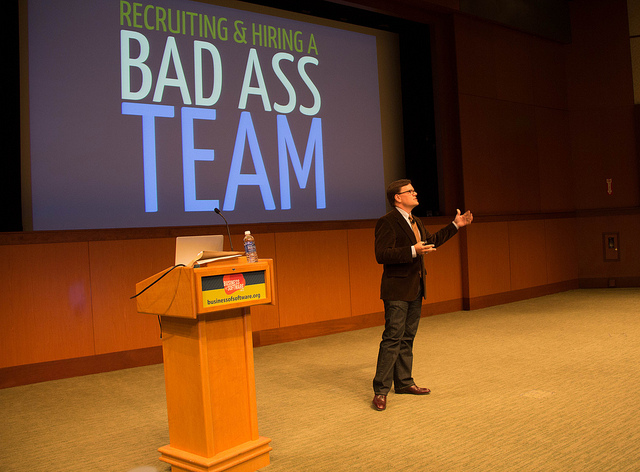One of the most important things an Entrepreneur or CEO can do is build a strong leadership team. Even in solo sports, such as professional mountain biking or golf, there are people who help with strategy, skill development, strength training, and the list goes on. No top athlete, Entrepreneur, or CEO can reach peak performance without a winning team.

5 Steps to Develop Your Team
Whether you are putting together your first leadership team or pushing an existing one to a higher level of performance, there are five aspects to get right. If you are going to have a team, ensure it is the BEST team possible.
- Decide how many will be on the team. Five plus or minus two is the magic number. Drop below, and you lose the benefit of collective intelligence. Go above, and you lose the ability to ask the really hard questions and really dive deep into strategy.
- Commit to a Team #1 mindset. This is hyper-critical for peak company performance. Team #1 means that, for whomever is on the team, the health and well being of the leadership team takes priority over the divisions or teams that the members support. Said another way, Team #1 must be committed to the Full Company Objectives and not just the objectives for their divisions.
- Create a Team #1 playbook. Hopefully your company has Core Values and a Core Purpose in place to drive healthy growth. Team #1 needs its own set of rules, agreements, and aspirational values to guide them through People, Strategy, and Execution discussions. Team #1 is still accountable for the full company Core Values, but to hit peak performance or reach a higher level, aspiration to achieve more is required.
- Behave your way to Trust. This starts with the CEO. The company leader must be vulnerable, admit to mistakes, and share fears so others can see vulnerability in action. Once the team learns to be vulnerable as well, their guards will come down and real work can get done. This accelerates the team’s ability to separate themselves from what is good for them personally versus what is best for the team and the company. A good rule of thumb is ensuring one quarter to one half of meeting agenda is committed to building team health.
- Set the cadence. Establish an annual calendar of Team #1 meetings. These are usually separate from Annual and Quarterly Planning sessions. Annual and Quarterly sessions are focused on Strategy and Execution while Team #1 meetings are focused on organizational health and full company alignment.
You have heard it before and you’ll hear it again. The best players don’t win, it’s the best team that wins. Leverage the power of the Team #1 concept and Crush the Competition!






 Performance reviews suck for so many reasons. Entrepreneurs avoid them, because there are way too many other things to do. Managers rarely do them right, and if they do, they don’t prepare properly. Employees hate them because they usually are tied to negative things and money. They usually happen only once a year … if they happen.
Performance reviews suck for so many reasons. Entrepreneurs avoid them, because there are way too many other things to do. Managers rarely do them right, and if they do, they don’t prepare properly. Employees hate them because they usually are tied to negative things and money. They usually happen only once a year … if they happen.




 When I talk to someone about Insight CXO and Gazelles, they often want to know what makes us better than the many other business growth coaches and methodologies out there. Even if they are familiar with Verne Harnish’s books, Mastering the Rockefeller Habits and Scaling Up, or the Rockefeller Habits in general, they’re curious about why I, as a successful serial entrepreneur, have fully bought in to the Gazelles approach to growing a business — and why it works.
When I talk to someone about Insight CXO and Gazelles, they often want to know what makes us better than the many other business growth coaches and methodologies out there. Even if they are familiar with Verne Harnish’s books, Mastering the Rockefeller Habits and Scaling Up, or the Rockefeller Habits in general, they’re curious about why I, as a successful serial entrepreneur, have fully bought in to the Gazelles approach to growing a business — and why it works.



